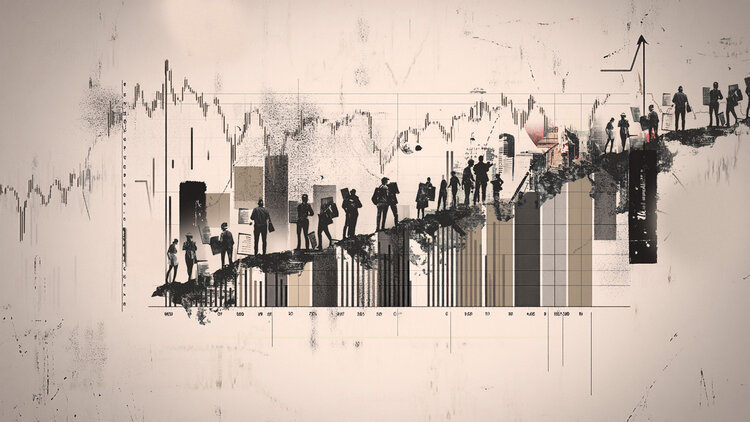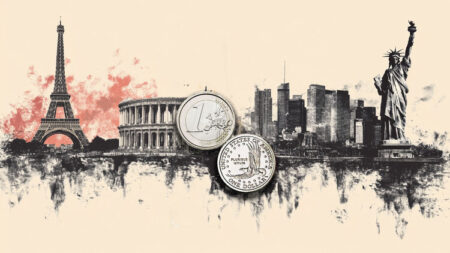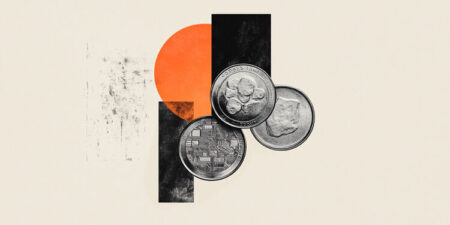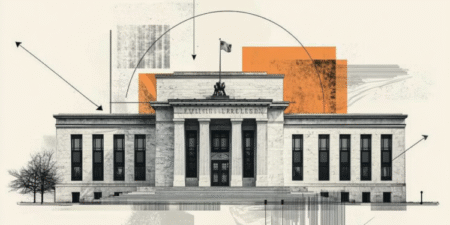- USD/INR steadies above 86.00, snapping a three-day losing streak after rebounding from 21-day EMA support near 85.80.
- The Indian Rupee weakens despite easing geopolitical tensions, as importer demand for the US Dollar and cautious risk sentiment cap gains.
- Fed Chair Powell maintains cautious tone, signaling not rushing to cut rates, focus shifts to Senate testimony on Wednesday.
The Indian Rupee (INR) weakens against the US Dollar (USD) on Wednesday. The Rupee opened on a firm note amid favorable risk sentiment but eased lower through the session as the US Dollar Index (DXY) held its ground near the previous week’s low. Meanwhile, Crude Oil prices remain stable after a sharp two-day sell-off, offering limited support to the Rupee.
The USD/INR is showing a mild recovery, halting a three-day losing streak as it rebounds from an intraday low near 85.80. The pair found support at the 21-day Exponential Moving Average (EMA) and is trading around 86.15 at the time of writing, during the American trading hours.
Geopolitical tensions in the Middle East have eased following a ceasefire agreement between Iran and Israel, bringing some relief to global markets. Oil prices have stabilized after a sharp two-day sell-off, and safe-haven demand has cooled, supporting broader risk sentiment. While the Rupee has moderately benefited from the de-escalation, its response remains subdued. The INR still faces pressure from steady demand for the US Dollar — particularly from oil companies — and remains sensitive to shifts in global risk appetite.
- The Indian Rupee posted its strongest daily gain in a month on Tuesday, though volatility persists with USD/INR swinging between ₹85.80 and ₹86.89 over the past week. The average exchange rate for June so far stands at approximately ₹86.00, aligning with the year-to-date average of around ₹86.10.
- In its June bulletin released Wednesday, the Reserve Bank of India (RBI) stated that the domestic economy continues to show strength despite global headwinds from trade disruptions and geopolitical tensions. The “State of the Economy” article emphasized that India remains on a stable growth path.
- “In this state of elevated global uncertainty, various high-frequency indicators for May 2025 point towards resilient economic activity in India across the industrial and services sectors,” the RBI said in its ‘State of the Economy’ article.
- RBI sees scope for inflation undershoot, trims FY26 forecast: the RBI said, “The near-term and medium-term outlook now gives us the confidence of not only a durable alignment of headline inflation with the target of 4 per cent… but also the belief that during the year, it is likely to undershoot the target at the margin.” Accordingly, the central bank revised its inflation forecast for FY2025–26 to 3.7%, down from the previous estimate of 4.0%.
- RBI signals liquidity shift, announcing plans on Tuesday to withdraw excess short-term cash from the banking system. The central bank aims to take out Rs 1 trillion ($11.6 billion) from the banking system via a seven-day variable rate reverse repurchase auction on June 27. This reverse repo operation, the first since November, is designed to align overnight call rates closer to the repo rate and may inject upward pressure into short-term money market rates.
- In the domestic equity market, the benchmark Sensex jumped 700.40 points to close at 82,755.51, while the Nifty surged 200.40 points to end at 25,244.75, buoyed by improved risk sentiment and easing geopolitical tensions. Foreign institutional investors (FIIs) offloaded equities worth Rs 2,427.74 crore on a net basis on Wednesday, according to exchange data.
- Crude Oil steadies after sharp drop, with Brent hovering near $66.80 and WTI around $64.80 on Wednesday. Prices have stabilized following a steep decline earlier in the week, as easing geopolitical tensions between Iran and Israel reduced fears of supply disruptions.
- India may push the United States to extend the exemption window for President Donald Trump’s reciprocal tariffs, set to kick in from July 9, since the two countries are yet to agree on the contours of a mini deal, sources told Moneycontrol. “Traders are now focused on upcoming trade-related updates for short-term direction. Near-term, USD/INR has support at 85.10 and resistance at 85.90,” said Dilip Parmar, Research Analyst, HDFC Securities.
- The US has long criticized India’s high agricultural tariffs, which average 39%, significantly higher than the US rate of 5%. India and the US are currently negotiating a mini deal or a scaled-down version of the first tranche of a Bilateral Trade Agreement (BTA), the timeline for which is around September
- Testifying before Congress on Tuesday, Federal Reserve (Fed) Chair Jerome Powell reinforced the Fed’s patient approach, signaling that a rate cut in July is unlikely. He emphasized the need for greater clarity on inflation trends and potential impacts from higher tariffs before implementing any policy shift. Powell’s remarks suggest that the Fed remains data-dependent, and rate cuts could be delayed until September or beyond. This cautious tone prompted a shift in market expectations, with traders dialing back bets on near-term easing.
- US New Home Sales drop sharply in May, Sales tumbled 13.7% MoM to a seasonally adjusted annual rate of 623,000 units in May. The sharp decline erased April’s 9.6% gain, pointing to renewed softness in the housing market as higher borrowing costs and economic uncertainty weigh on buyer demand.
- The US Dollar Index (DXY) slips below 98.00 level on Wednesday during the American session, trading around 97.80
USD/INR technical outlook: Retest in play, pair to trade in short-term range
USD/INR is currently trading around 86.03, retesting the breakout zone after slipping from recent highs. The pair found support near the 21-day EMA at 85.91, which aligns closely with the upper boundary of the symmetrical triangle pattern. The pair recently broke out of a symmetrical triangle but faced resistance below the 87.00 psychological mark, triggering a pullback.
The Relative Strength Index (RSI) on the daily chart is easing, hovering above neutral at 53.02, which indicates a loss of bullish momentum and suggests potential range-bound trading between 85.80 and 86.90 in the near term. A decisive break on either side of this range will likely dictate the next directional bias.
Indian Rupee FAQs
The Indian Rupee (INR) is one of the most sensitive currencies to external factors. The price of Crude Oil (the country is highly dependent on imported Oil), the value of the US Dollar – most trade is conducted in USD – and the level of foreign investment, are all influential. Direct intervention by the Reserve Bank of India (RBI) in FX markets to keep the exchange rate stable, as well as the level of interest rates set by the RBI, are further major influencing factors on the Rupee.
The Reserve Bank of India (RBI) actively intervenes in forex markets to maintain a stable exchange rate, to help facilitate trade. In addition, the RBI tries to maintain the inflation rate at its 4% target by adjusting interest rates. Higher interest rates usually strengthen the Rupee. This is due to the role of the ‘carry trade’ in which investors borrow in countries with lower interest rates so as to place their money in countries’ offering relatively higher interest rates and profit from the difference.
Macroeconomic factors that influence the value of the Rupee include inflation, interest rates, the economic growth rate (GDP), the balance of trade, and inflows from foreign investment. A higher growth rate can lead to more overseas investment, pushing up demand for the Rupee. A less negative balance of trade will eventually lead to a stronger Rupee. Higher interest rates, especially real rates (interest rates less inflation) are also positive for the Rupee. A risk-on environment can lead to greater inflows of Foreign Direct and Indirect Investment (FDI and FII), which also benefit the Rupee.
Higher inflation, particularly, if it is comparatively higher than India’s peers, is generally negative for the currency as it reflects devaluation through oversupply. Inflation also increases the cost of exports, leading to more Rupees being sold to purchase foreign imports, which is Rupee-negative. At the same time, higher inflation usually leads to the Reserve Bank of India (RBI) raising interest rates and this can be positive for the Rupee, due to increased demand from international investors. The opposite effect is true of lower inflation.
Read the full article here















